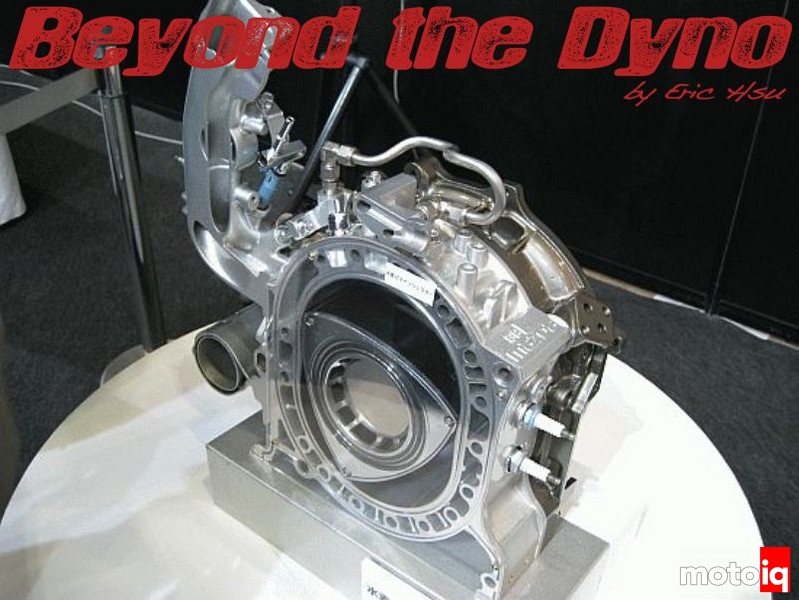,
At the Tokyo Auto Salon show back in 2009 (the last time I attended TAS), Mazda had a display dedicated to the rotary engine that included the advancements of the Hydrogen rotary and its refueling infrastructure, a scaled down toy engine you could spin by hand, another display that explained the 4 cycles of a Rotary, and even some news of the up and coming “big block” 16X engine. You can read more about the Hydrogen RX-8 here. While the Hydrogen fueled rotary makes slightly less power than its gasoline brother, the cool thing is that it is dual fuel and can switch between gasoline and hydrogen, but not a mixture of both. Mazda has fleet of Hydrogen powered RX-8s in both Japan and the USA. Hydrogen is a clean burning fuel. When hydrogen is combusted with air, the resulting emissions is only water vapor. How’s that for clean? Mazda was able to finally build a clean burning rotary after all these years. A clean burning rotary is fine and all, but it’s not what I’m interested in. I’m interested in the 16X. Mazda has a complete site breaking down the future 16X Rotary here.

The four cycles of the rotary engine.

The scaled down 13B toy engine.

Read it if you can. I cannot read Japanese, but it looks like they are discussing the future of the Mazda rotary engine.

Somebody translate please.

The three major differences between the 13B and the 16X will be new “bore” and stroke dimensions, direct injection, and aluminum side housings to lower the engine’s overall weight.

The trochoidal shape has been changed. I am guessing this is because the stroke has been increased, but perhaps there are other subtle changes to further enhance the engine’s efficiency.

The engine’s overall displacement will be 1600cc which will be achieved by decreasing the rotor width (the equivalent of a piston’s bore) and increasing the the stroke. Despite the engine’s greater displacement, the engine’s overall size will be just an compact as the current Renesis (RX-8) engine.

A big part of the 13B’s weight comes from the cast iron side and intermediate housings. With aluminium side housings, the 16X has a chance to be considerable lighter in weight too. This will bring the 16X up to modern power output to weight ratio standards. Racing Beat made some aluminum side housings for race engines based on early 13Bs, but they are expensive and not widely used.


